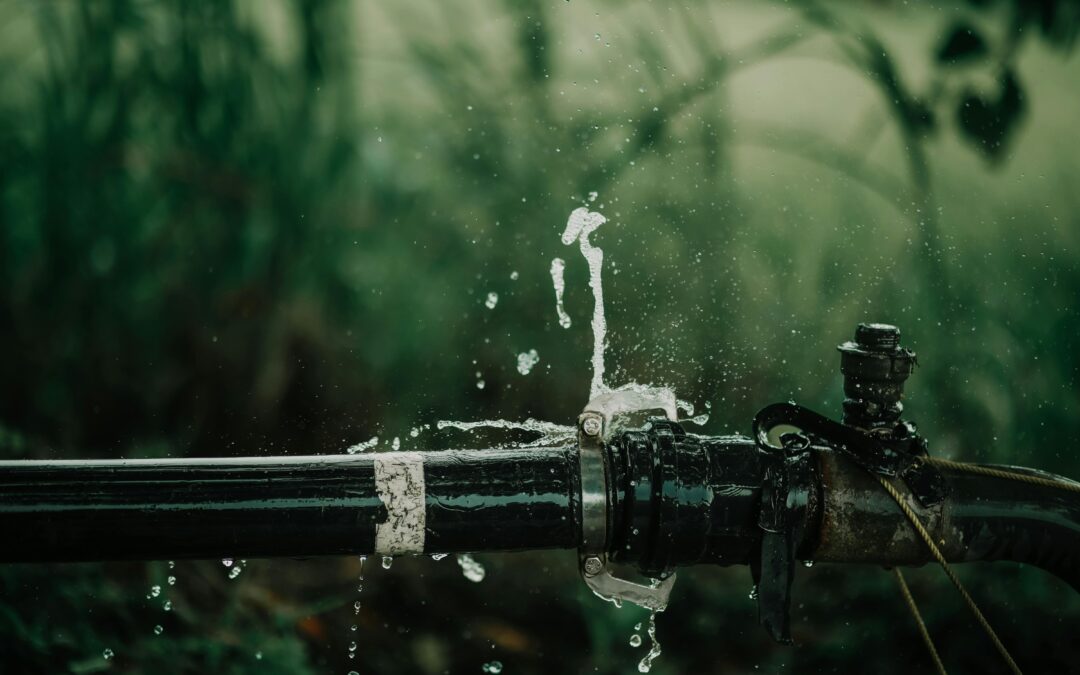Ever wonder if your money is literally going down the drain?
Undetected water leaks can waste thousands of gallons per year in a single-family home. That’s money down the drain, and it can also lead to serious property damage. Water conservation and financial savings are critical priorities for homeowners and property managers alike, and leak detection systems play a crucial role in protecting both.
This blog is your guide to understanding the various types of leak detection systems, their benefits, and the importance of proper maintenance and inspections. By understanding and implementing effective leak detection solutions, you can protect your property, conserve water, and save money.
UNDERSTANDING THE RISKS OF WATER LEAKS
Water leaks may seem like a minor inconvenience, but left unchecked, they can pose serious threats to your property, your wallet, and even the environment. Here are some of the consequences of water leaks:
- Structural Damage: Water can significantly damage your home’s structure. Consistent leaks can weaken beams, floors, and even foundations. Wood rots, drywall crumbles, and metal components rust – all leading to extensive and expensive repairs. Early detection of leaks can prevent these structural issues before they become major problems.
- Mold Growth: Excess moisture from leaks creates an ideal breeding ground for mold. This hazardous fungus can trigger a variety of health problems, including respiratory issues, allergies, and even skin irritation. Beyond health risks, mold growth can damage building materials, necessitating costly mold remediation efforts.
- Increased Water Bills: One of the most immediate consequences of a leak is a surge in your water bill. Even a small, hidden leak can waste hundreds of gallons of water a month, putting a significant strain on your budget. Leak detection systems can help identify these hidden culprits before they drain your wallet alongside your precious water resources.
- Environmental Impact: Freshwater is a finite resource, and every drop wasted due to a leak contributes to environmental strain. By addressing leaks promptly, you’re not just protecting your property, you’re also taking a responsible step towards water conservation.
TYPES OF WATER LEAK DETECTION SYSTEMS
When it comes to protecting your property from water damage, there’s a leak detection system suited for every need. Here’s a breakdown of the main types:
PASSIVE LEAK DETECTORS:
These are simple and affordable solutions that rely on physical changes to alert you of a potential leak.
- Features: Passive detectors typically use absorbent pads or tabs that change color upon contact with moisture.
- How They Work: There’s no electrical wiring involved. As water wicks into the pad or tab, the material reacts by turning a bright color, like red or blue, providing a clear visual cue of a leak’s presence.
- Ideal Scenarios for Use: Passive detectors are ideal for placing in areas where a leak is likely but immediate notification isn’t crucial. Basements, laundry rooms, and underneath sinks are common spots for them due to their affordability and ease of use.
ACTIVE LEAK DETECTORS:
Taking a step up in sophistication, active leak detectors utilize sensors to electronically monitor moisture levels.
- Mechanism: These detectors house sensors that constantly check for the presence of water. When moisture is detected, the sensor triggers an alarm or notification.
- Advantages: The biggest advantage of active detectors is their ability to provide real-time alerts, allowing for a quicker response to potential leaks. This can minimize water damage and give you a head start on repairs.
- Ideal Scenarios for Use: Active detectors are well-suited for protecting critical areas like server rooms, utility areas, and commercial spaces where a quick response to a leak is essential.
SMART LEAK DETECTORS:
Smart leak detectors integrate the functionality of active detectors with the added benefit of smart home connectivity.
- Integration with Smart Home Systems: These detectors can connect to your smart home hub, allowing them to interact with other smart devices in your home.
- Remote Monitoring: The real power of smart detectors lies in remote monitoring. You can receive alerts via email, text, or mobile app no matter where you are, ensuring you’re always informed about potential leaks.
- Alert Features: Smart detectors often offer customizable notification options. You can choose to receive alerts for specific water levels or even set up automated shutoff valves on your water main line to prevent further damage in case of a major leak.
PREVENTIVE MEASURES AND BEST PRACTICES
Now that you understand the risks of water leaks and the different types of leak detection systems available, let’s explore some proactive steps you can take to prevent leaks and identify them early:
REGULAR PROPERTY MAINTENANCE AND INSPECTIONS
Don’t wait for a leak to spring before springing into action. Conduct routine inspections of your property, paying close attention to areas prone to moisture, such as basements, laundry rooms, under sinks, and around water-using appliances. Look for any signs of water damage, like warped floors, peeling paint, or visible mold growth.
Consider scheduling annual inspections with a qualified plumber like Landa Plumbing. We can perform a comprehensive inspection of your plumbing system to identify potential problems before they escalate into major leaks.
MONITORING WATER PRESSURE AND INSTALLING PRESSURE REGULATORS
High water pressure can put extra stress on your pipes and joints, increasing the risk of leaks. Invest in a water pressure gauge to monitor your home’s water pressure. Ideally, it should be around 40-60 psi. If your water pressure consistently exceeds this range, consider installing a pressure regulator to maintain a safe and consistent level, reducing the strain on your plumbing system.
ANNUAL PROFESSIONAL PLUMBING INSPECTIONS FOR HIDDEN LEAKS
While you can conduct visual inspections yourself, some leaks can hide behind walls, under floors, or within crawl spaces. Scheduling annual professional plumbing inspections with a licensed plumber is crucial for detecting hidden leaks before they cause extensive damage.
These inspections may involve advanced leak detection tools like acoustic leak detectors or thermal imaging cameras, which can pinpoint leaks with pinpoint accuracy, even if they’re not readily visible.
IMMEDIATE ACTION AND KNOWLEDGE OF THE MAIN WATER SHUT-OFF VALVE
Knowing the location of your main water shut-off valve is critical in case of a major leak. In the event of a burst pipe or a large leak, being able to quickly shut off the water supply can minimize water damage. Familiarize yourself with the location and operation of your main shut-off valve, and ensure everyone in your household knows where it is and how to use it.
Remember, early detection is key! Taking proactive steps to identify and address leaks promptly can save you money on water bills, prevent costly repairs, and protect your home from structural damage and mold growth.
FINAL THOUGHTS ON THE IMPORTANCE OF WATER LEAK DETECTORS
Water leak detection systems are essential tools for safeguarding your property against the significant damage caused by water leaks. They protect the structural integrity of your home or business, help prevent mold growth, and reduce inflated water bills. By choosing the right type of leak detector and ensuring its proper installation and maintenance, you can conserve water and save money.
Contact Landa Plumbing for professional assistance in selecting and maintaining the best water leak detection system for your property. Our expert team is ready to help you protect your investment and provide peace of mind.
TAKE ACTION: PROTECT YOUR PROPERTY FROM WATER DAMAGE
Don’t wait for a leak to cause costly damage. Take immediate steps to install and maintain water leak detection systems in your home or business.
For professional help and consultations, reach out to Landa Plumbing: Protect your property today with the right defense against water damage!

